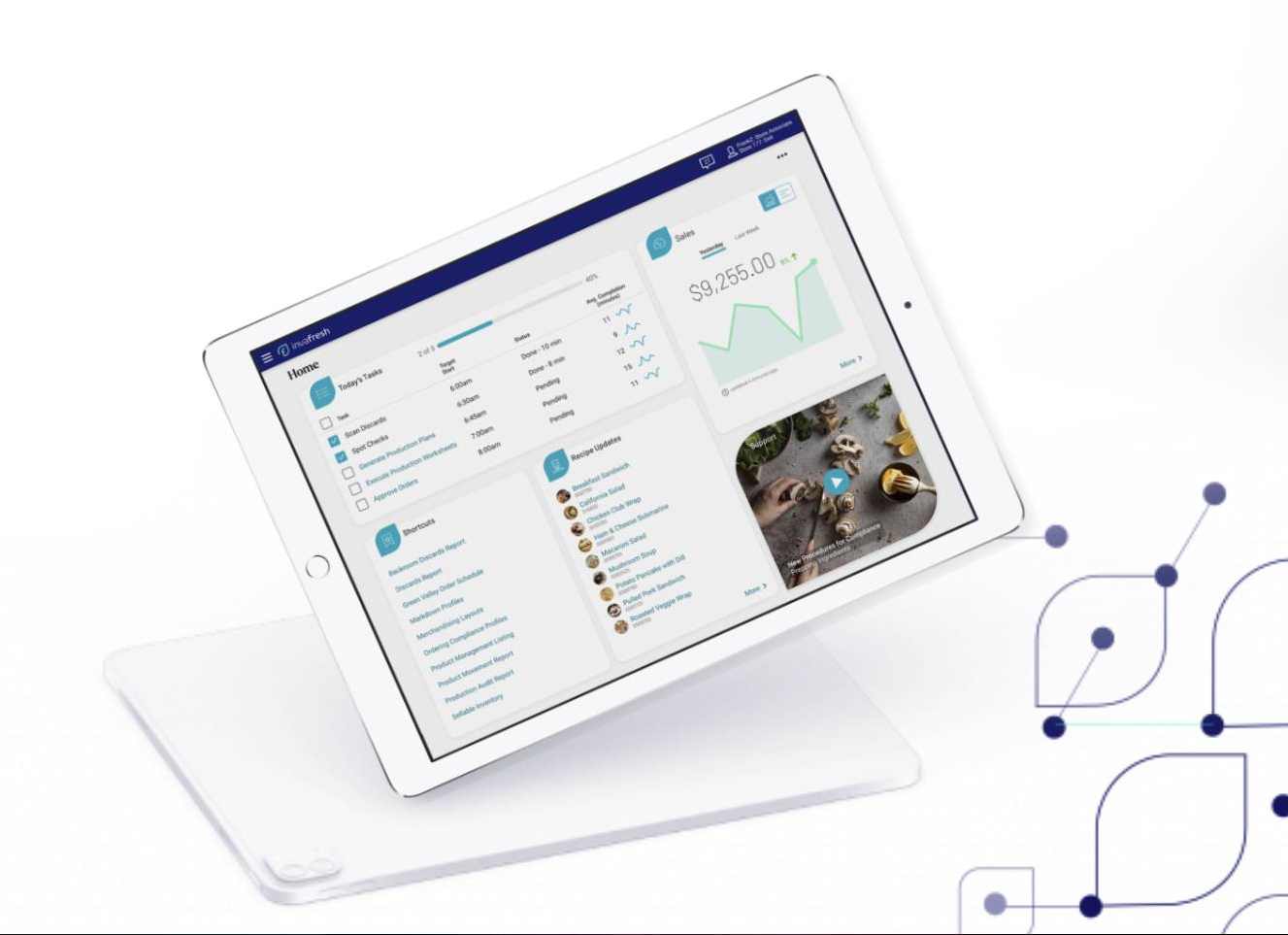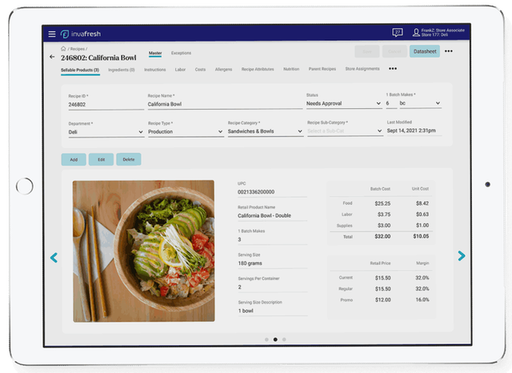
A Guided Approach to Digital Transformation
Transitioning from Legacy to the Intelligent Enterprise for Grocery Retailers
Joe Smirlies, Senior SVP, Product Management, Invafresh
As Senior Vice President of Product Management, Joe is recognized as one of the world’s foremost experts in sustainable fresh-native technology solutions. With over 30 years of experience in the grocery technology sector, Joe brings the depth and breadth of knowledge to service fresh food retailers with innovative technologies and shape the future of fresh food retailing. Joe spent the early days of his career with IBM and transitioned to Invatron in 1999 as its first Chief Technology Officer where he co-created Invatron’s fresh item management portfolio of solutions. For the last 20 plus years, Joe continues to partner with leading grocery retailers across North America to understand their challenges and deliver technologies to optimize grocery store sales, operational processes, and food waste initiatives.

In today's fast-paced and competitive retail industry, digital transformation is imperative for businesses to stay relevant and thrive. Grocery retailers recognize the need to embrace technology-driven solutions to enhance customer experiences, streamline operations, and gain a competitive edge. One of the key drivers of digital transformation in the retail sector is the integration of artificial intelligence (AI) and automation, which can revolutionize traditional processes and enable the transition to intelligent retail enterprises.
Below is a step-by-step guide to help you seamlessly implement these technologies across your grocery retail operations.
Step 1: Assessing Current Systems and Processes
You must define clear business goals and objectives to drive a successful digital transformation. Consider short-term and long-term aspirations and align them with the overall business strategy. With customer expectations evolving rapidly, focus on enhancing the shopping experience, improving operational efficiency, and optimizing supply chain management. Identify areas where AI and automation can deliver significant value, such as demand forecasting, personalized marketing, or real-time inventory tracking.
Step 2: Defining Business Goals and Objectives
Before embarking on your digital transformation, you must assess your existing systems and processes. This assessment will provide valuable insights into the strengths and weaknesses of your current infrastructure. Identify pain points such as inefficient inventory management, slow order processing, or outdated customer support systems. This evaluation will serve as a baseline for understanding the areas that require improvement and the potential benefits that AI and automation can bring to your operations.
Step 3: Formulating a Digital Transformation Strategy

A comprehensive digital transformation strategy is essential for a smooth and effective transition. Start by prioritizing your identified areas for improvement and setting achievable milestones. The strategy should encompass technology adoption, process redesign, and organizational changes. Emphasize the integration of AI and automation technologies to enable intelligent retail operations. Consider partnering with technology vendors or consultants specializing in retail digital transformation to leverage their expertise and experience.
You must invest in a modern and scalable IT infrastructure to support digital transformation initiatives. Outdated hardware and on-premise systems can impede progress and limit the potential of AI and automation. Upgrade or replace legacy systems with cloud-based solutions that provide scalability and flexibility. Cloud platforms also facilitate seamless integration with AI-powered analytics tools, enabling you to harness the power of data for informed decision-making and predictive analytics.
Step 4: Building a Scalable IT Infrastructure
Step 5: Implementing AI and Automation Solutions
The fundamental transformation happens when you harness the capabilities of AI and automation technologies. Leverage AI and machine learning algorithms to optimize inventory management, demand forecasting, and supply chain logistics. By automating repetitive tasks, such as inventory tracking, order processing, and customer support, retailers can free up valuable time and resources for higher-value activities. Implement chatbots or virtual assistants to offer personalized shopping experiences and handle customer inquiries, enhancing customer satisfaction and loyalty.
Data is the lifeblood of digital transformation. You should collect and analyze data from various sources to gain valuable insights into customer preferences, buying patterns, and market trends. Utilize AI-driven analytics tools to extract actionable insights from vast amounts of data. This data-driven decision-making approach enables you to identify opportunities, optimize pricing strategies, and tailor marketing campaigns for better customer engagement. Continuously monitor and evaluate the effectiveness of AI and automation solutions to drive ongoing improvements.
Successful digital transformation requires a shift in mindset and a culture of innovation within your organization. You must invest in employee training programs to ensure your workforce has the necessary skills to adapt to new technologies and processes. Encourage a culture of continuous.
Invafresh, a comprehensive solution for managing grocery retail operations, has delivered remarkable success stories in the grocery retail industry. Two notable examples to highlight include The Fresh Market and Price Chopper.
The Fresh Market partnered with Invafresh to improve inventory management and replenishment for their perimeter and center store operations. By leveraging Invafresh's Fresh Retail Platform, they automated ordering and production decisions, resulting in more efficient team members, increased product variety, reduced shrink, and improved store margins.
Step 6: Data-Driven Decision Making
Step 7: Employee Training and Change Management
Success with Invafresh
On the other hand, Price Chopper tackled its sustainability challenge by implementing Invafresh's modular technology. With accurate demand forecasting and optimal replenishment orders, they prevented 20 tons of fresh food from going to waste weekly. This significant waste reduction, and improved inventory management, led to decreased shrink, increased profits, and recognition for their sustainability efforts.
These success stories demonstrate how Invafresh's automation capabilities, driven by AI and intelligent algorithms, can revolutionize grocery retail operations. Invafresh empowers retailers to stay competitive in this evolving industry landscape by optimizing processes to improve profitability and achieve sustainability targets.
Invafresh
We empower grocery retail leaders to optimize their fresh food retail operations, improve customer satisfaction, and drive business growth.




